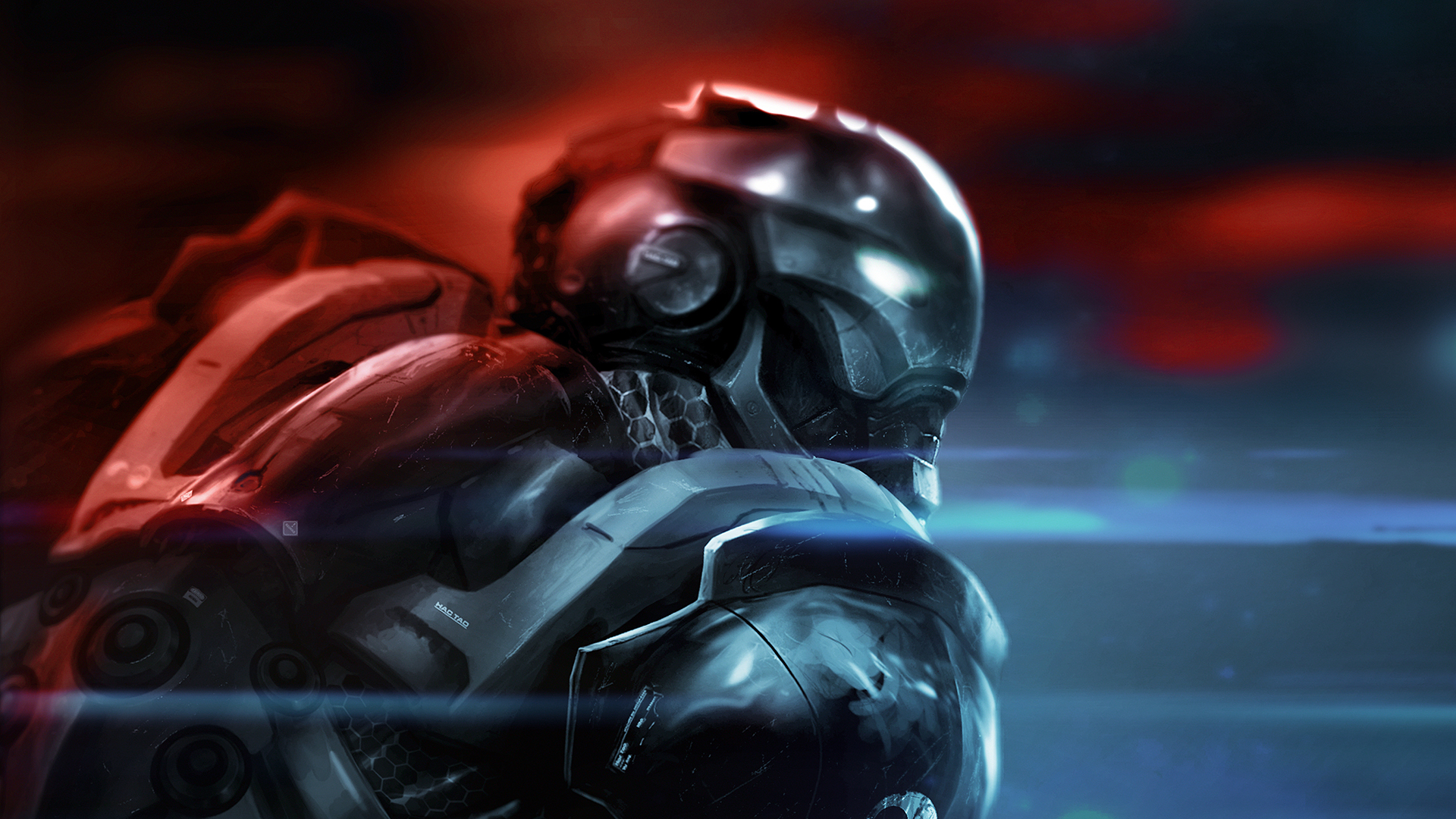
Infinity: Getting Started
So you’re interested in Infinity! Welcome to what I think is the best miniature game and best community! This page was last updated June 7, 2021.
This document is intended to help orient newer players, and for veteran players to link their friends (or rivals) to. This is a Living Document. You can get in touch with me at wisekensai@this_site to suggest changes, additions, or any other feedback you might have. Please share this widely with new folks in your community, along with a link to InfinityTheAcademy.com!
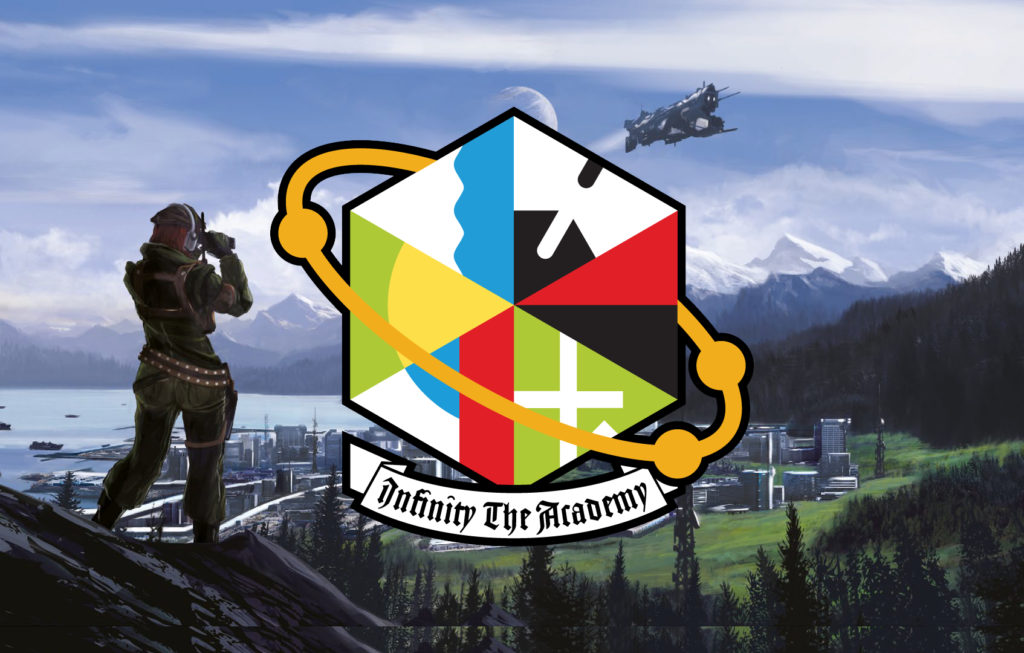
How to Play
There are lots of guides and tutorials out there, but here are some of the better ones:
If you prefer text over video, there’s an article series that explains the mechanics and also has text-only demo game with explanations:
Finding a Mentor
The videos and articles should get help you get started, but what you’ll really want to do is get in touch with your local community. Corvus Belli has a group of volunteers that love the game and love to teach it! We’re called Warcors, and you can find all of us by clicking on the world map here:
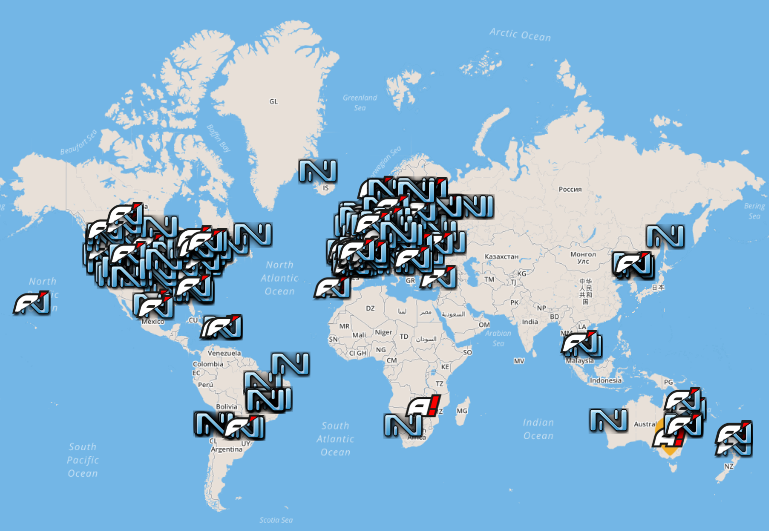
You can find more info on the Warcor program on the InfinityTheGame Warcor Page as well! There’s also a group of mentors on InfinityGlobalLeague.com as well!
Getting Connected
Unfortunately, we have to start this with a disclaimer:
Disclaimer: The Infinity community at large is full of kind hearted, welcoming, and supportive people. You can find them in the various Infinity-related Discords, on Facebook, and on Reddit.
However, the official forums at https://forum.corvusbelli.com/ are widely considered to be toxic. It is disappointing to have to make this statement, especially because Corvus Belli (the company which makes Infinity the Game) is otherwise a great company.
As with most things, there are good and bad aspects to everything, and the official forums are no exception. Still, it’s worth saying that most of the helpful features and positive of the aspects are available on the aforementioned social media platforms–to some extent their very existence is a response to the toxicity of the forums. Venture into the forums at your own risk.
There are also some Discord servers you can join. Infinity the Discord the oldest and largest one with a wide and varied community. There are too many Discords to list here, but if you join any of these I’m sure you’ll find your way into some others!
Infinity Global League is intended to be a neutral space for players of all stripes to gather, but with a special focus on streaming content and mentorship for newer players. They also run a lot of leagues targeted at players of all levels.
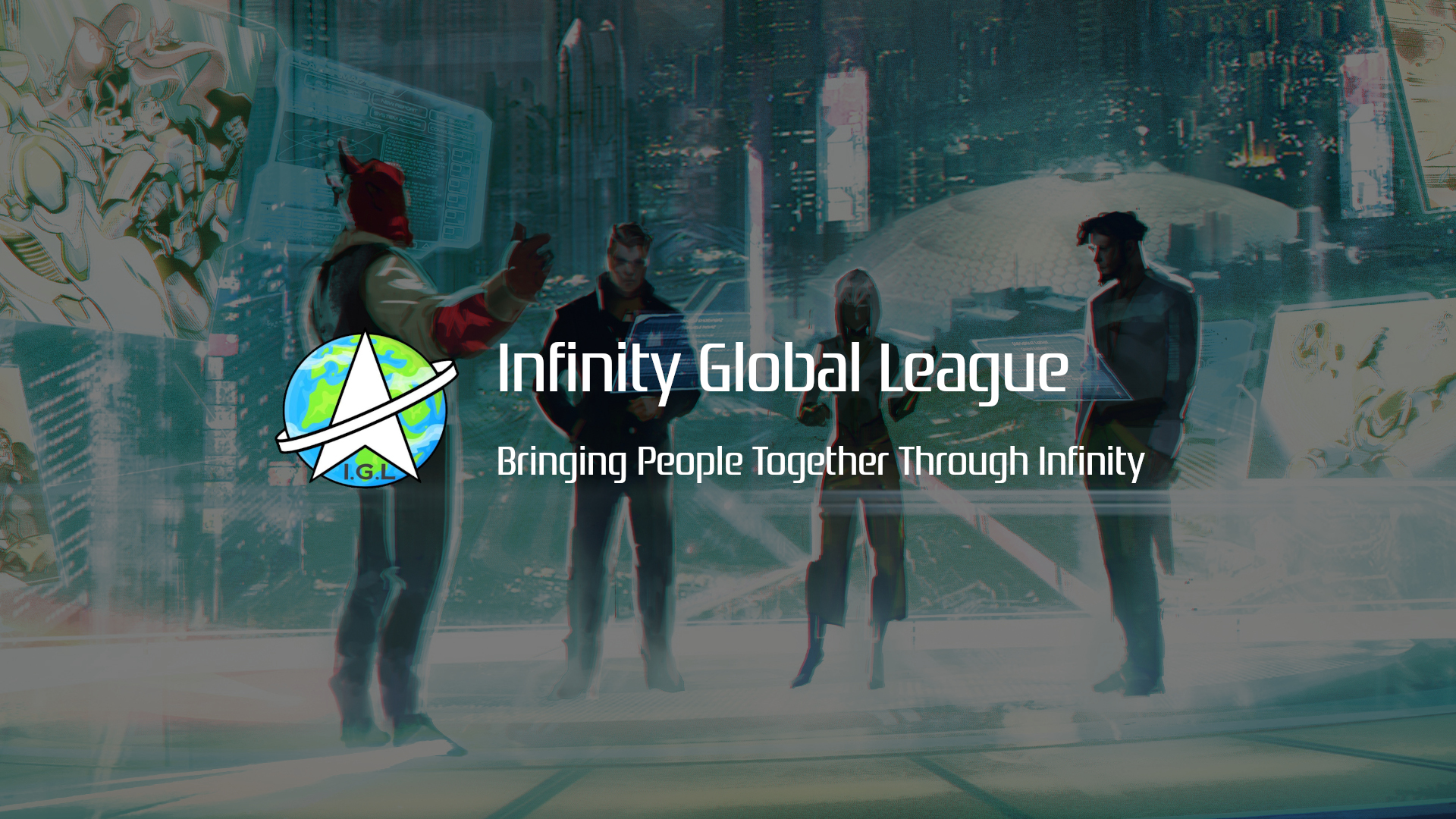
Philosophy
As with everything else on the Internet, you’ll find a lot of opinions and feels about various Infinity-related things.
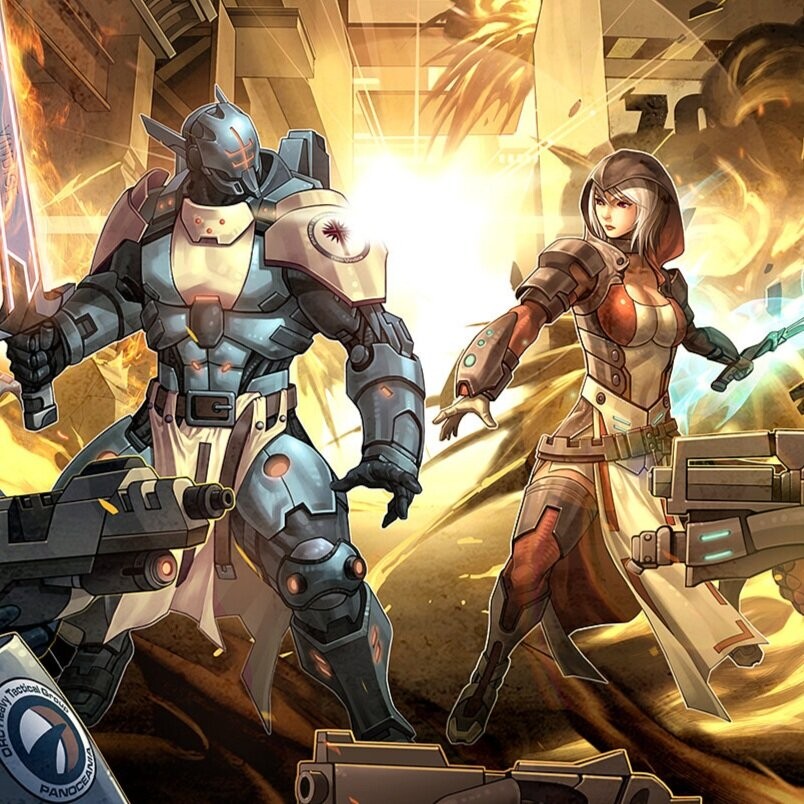
This article is intended to help you get situated, figure out what you need to buy, and help you get your first games of Infinity in! I’ll be writing it with the following base assumptions:
- Context is Everything – Your faction, your opponents, your typical mission lineup, and your game table are all factors in shaping your opinion of the game. What works for you in your meta might not work for someone else. And as far as “The Internet Meta” goes, that’s an oxymoron. As Adam (TheDiceAbide) put it, “A meta is a community of people who play against each other, while the internet meta is full of people who rarely, if ever play each other.”
- Players Win, not Factions – Player skill/experience, play style to faction compatibility, and faction compatibility to mission are generally the key determining factors for victory. There are no overwhelmingly dominant factions in Infinity. There are popular factions, some factions are more exciting than others, but all factions are competitive. Some factions have problems with certain missions, but excel in others.
- Everything is Good in Context – All unit profiles have a place and are viable. Some are more popular and effective for a particular context than others, but Infinity is a game that is won on the table, not in the army builder. This goes back to “Context is Everything.” For example, if your meta plays scenarios where specialists aren’t necessary, the relative value on specialists goes waaaay down, and so on.
- It’s Not Your List – This is often followed by “It’s You,” which can be off-putting and a little disheartening. It’s also an oversimplification, because some scenarios require to to bring specific tools to even have a hope of winning, and if you don’t have them in your list, well… The key message that this pithy slogan is trying to convey is that how you play the game on the table is often more important than what you models you brought. You’ll need to start with a solid list foundation, but the decisions and prioritizations you make during the game are what will carry the day.
You may disagree with some or all of the above, but these ideas will color the rest of the article. If you’re looking for some longer form discussion about these concepts, especially list building and profile evaluation, check out Episode 4 of The Dice Abide LIVE:
Choosing a Faction
There are two main factors to consider when choosing a faction:
- Rule of Cool – Does the faction narrative appeal to you? Do the miniatures look fun to build and paint? This is intensely personal, so I recommend looking at Human Sphere to get a feel for what minis look like and the backstory to get started.
- Faction Play Style – All factions cover most of the common play styles well. There are certainly factions that match certain play styles better, and we’ve written up a great guide here: Which Faction is for You?
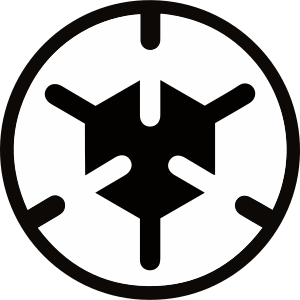
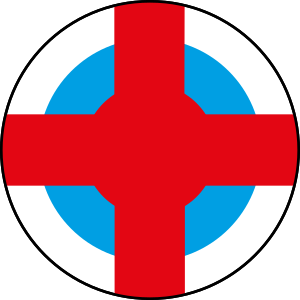

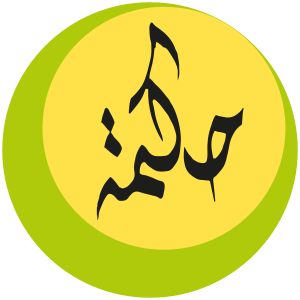
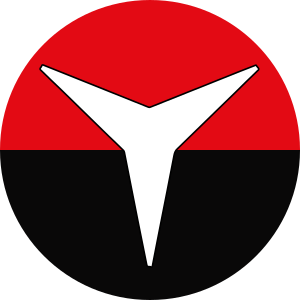
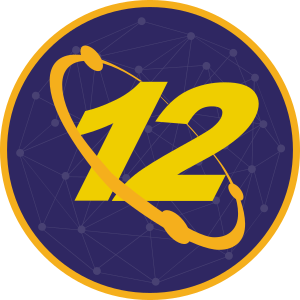



Once you’ve done that, the next decision point is whether to start with “vanilla” or a sectorial. I wrote a guide ages ago, which is a bit dated but still covers most of the relevant points.
To update the article to the modern era, I’d suggest that playing a sectorial over Vanilla is pretty reasonable This is mostly because there are so many factions it can be a little overwhelming to play Vanilla. I’d recommend staying away from the NA2 factions to help you focus your purchasing–most of them draw from at least two of the “main” factions.
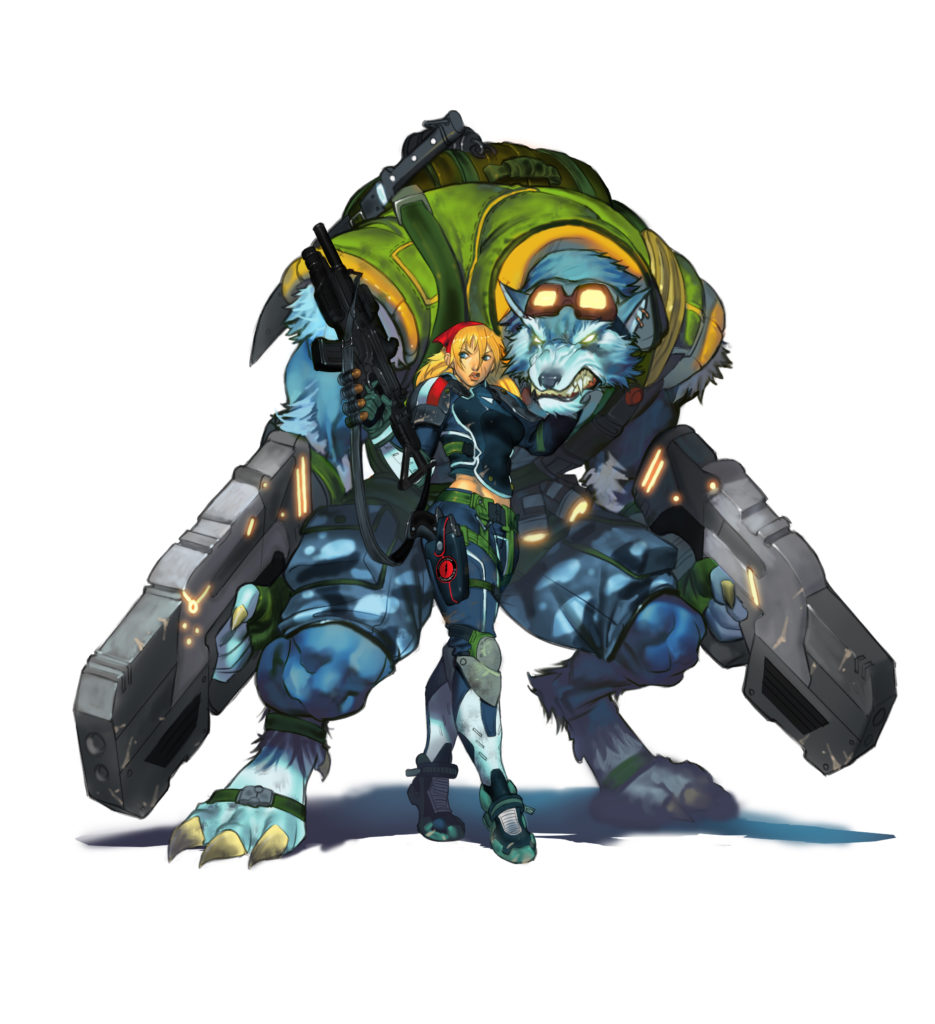
Before you buy into a faction, ask around your local community to see if anyone already plays that faction and if you can get a demo game in with that faction. Infinity is not an easy game to learn, so it’s important that you set yourself up for success. I’ve had the good fortune to play as or against pretty much every faction in Infinity, and I’ve written up every game I’ve played since 2015, so here’s a list of battle reports for every faction in Infinity so you can get a flavor for what each faction plays like and some example lists for each faction:
Again, there’s no wrong answer to which faction you should start. If you love it, play it! That said, there is definitely a learning curve associated with each faction which is often not very linear as your skill and experience grow!
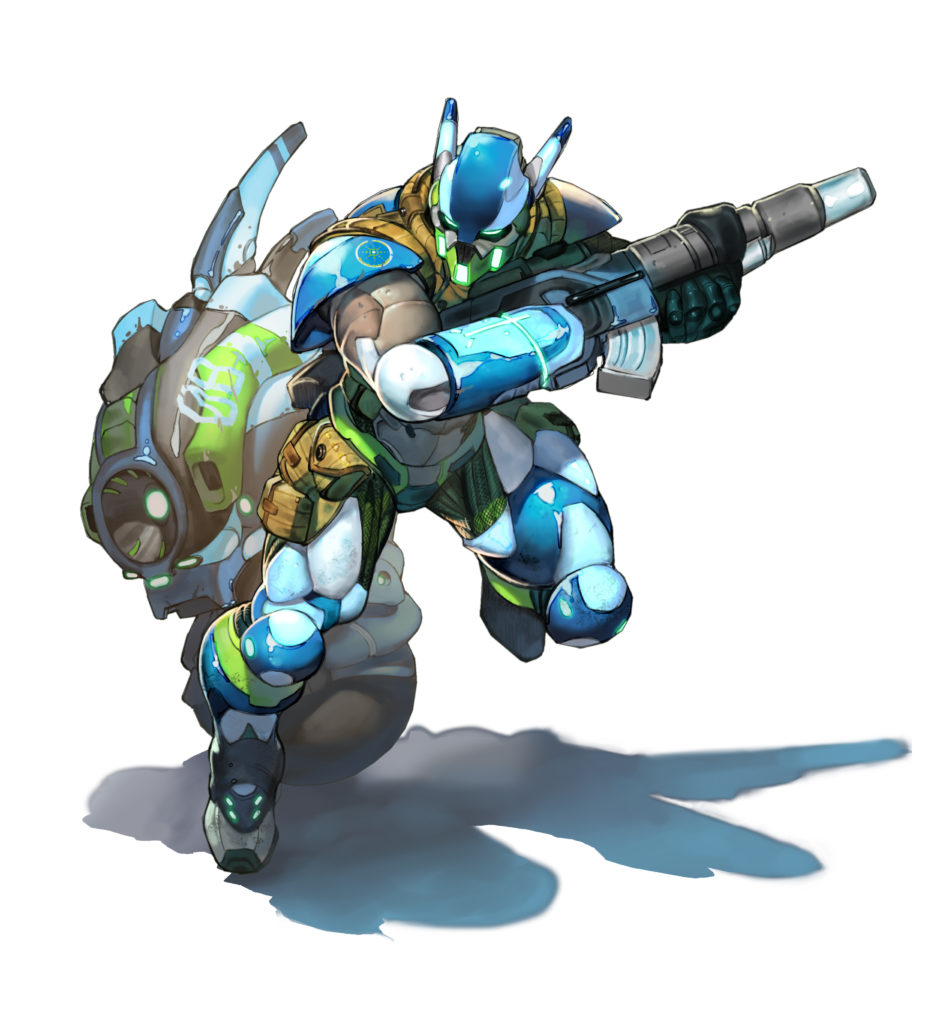
For example, PanOceania is a great faction to start with because you have lots of reliable shooting platforms to muddle your way through a game with. As people start responding appropriately to your initial brute force tactics, things can get quite difficult and your growth might plateau for awhile. Conversely, Haqqislam can be difficult at the beginning, because there are a lot of asymmetric warfare options that might be hard to grasp for your first few games. As you grow as a player, those options will start slotting into your game plan and your general skill will scale with your faction more easily.
This isn’t to say that PanOceania or Haqqislam is better than the other, it just means that your growth experiences with various factions will be as varied as the factions. Be prepared to take a hard look at your growth pattern as you get into the game and respond accordingly.
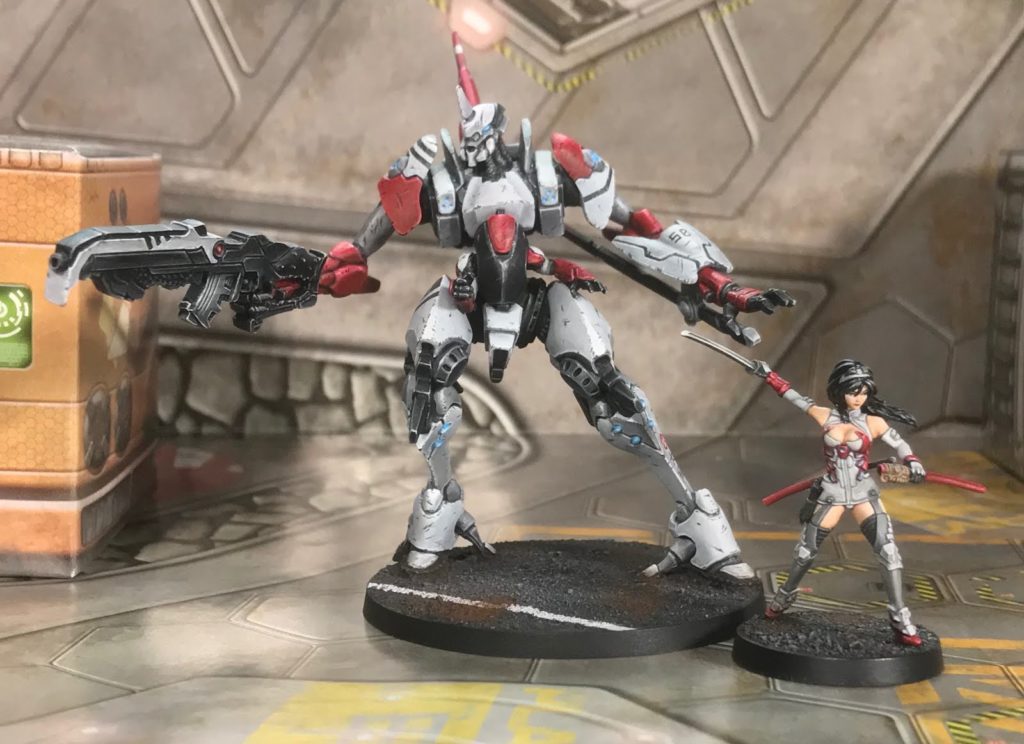
I would mention that JSA isn’t the best faction to get started with. Of all the factions, they’re a standout example of a departure from the normal design philosophy of Infinity (the other standout being Tohaa). They have beautiful models and an incredibly rewarding play experience, but you can expect some serious frustration early on, especially if you’re new to the miniature wargaming hobby. If you want to play with the space samurai faction, make sure you have an experienced player (who preferably also plays JSA) to help you through the difficult learning curve!
What do I Buy First?
Well, right now I’d recommend buying into Code One. Corvus Belli has an actual phased plan to get people into the game, where there’s a clear progression of what you should buy. I’ll let the illustrious Bostria from CB tell you all about it:
After that, there’s a huge amount of stuff to sink your teeth into. You can ask around on the internet for help, but always remember, there’s no right answer. You need to pick what’s going to work for you.
If your faction isn’t represented in Code One, not to worry. It will be eventually, and you can always proxy models. There are also a number of efforts to make fan-generated rules for unrepresented factions. Here’s one, if you’re looking for a starting point:
If you’re looking to go the home brew route, it’s important to remember it and other efforts are a fan-made initiatives and reflect the authors’ biases and opinions about the game. They’ve done a lot of work and deserve to be recognized for that, of course. Personally, I’m okay playing Code One as-is, but that’s the beauty of this game and its community–it’s diverse and robust.
If you absolutely hate the factions in Code One and want to play something else, there’s enough in the way of starter packs nowadays that you have a reasonable way to get into any army you might be interested in, and you can get older models by trade. There’s a healthy trade/sell market on Facebook for Infinity models.
Stuff You Need to Play
I’m going to start by saying that Bromad Academy not sponsored by any particular company. Also, there are lots of options out there for Infinity accessories. It doesn’t matter, just buy what fits your budget and what you like.
Your First Table
Your first Infinity game can be played on any flat surface with enough room. Anything 2’x2′ or bigger will be fine, although you’ll want to hit 4’x4′ and 6’x4′ for competitive play. You don’t need to find fancy wargaming terrain to start–literally the contents of your bathroom will probably suffice. You can just put toilet paper, tissue paper boxes, random bottles and so on the table to block line of sight and force your troops to maneuver around them. Once you’ve gotten a feel for the game and want to move to a 4’x4′ or larger table, you may have the the problem of not having enough room!
To solve that issue, all you need to do is go to your local hardware supply store and buy some MDF sheets. Have them cut it into 2’x4′ sections, and then tape the edges with duct tape. Tape the sheets together on the long edge to form a tape hinge. You can easily store the folded up section behind a couch or bookshelf against a wall. Then get a plastic tote to store your fancier terrain and if you really want, you can get a nice neoprene mat from any number of great companies to make your table really pop!

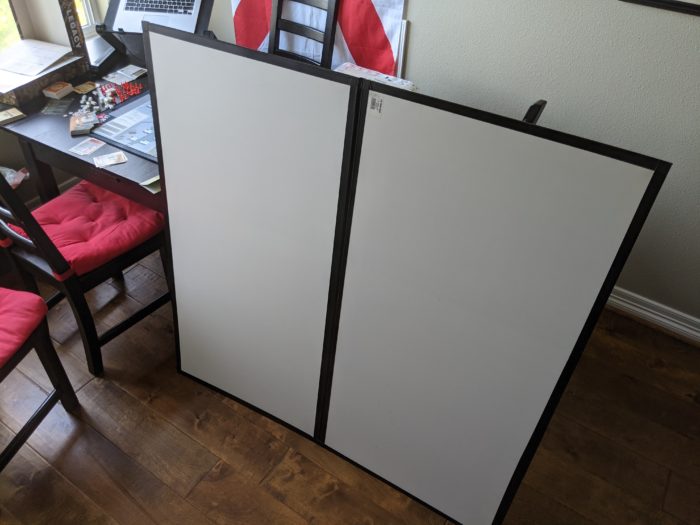
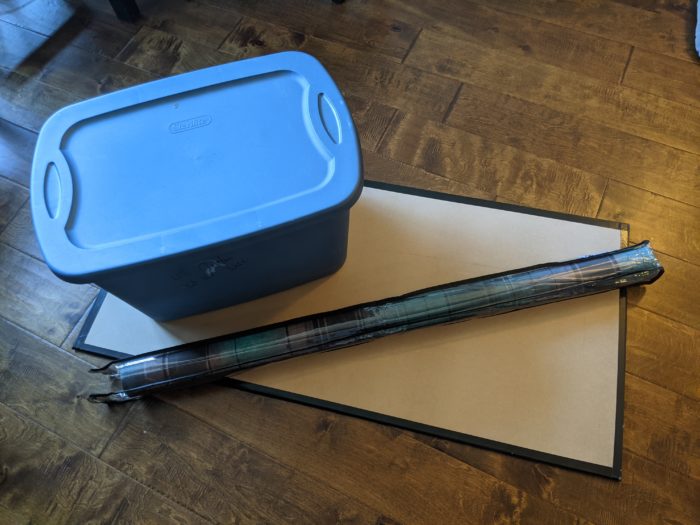
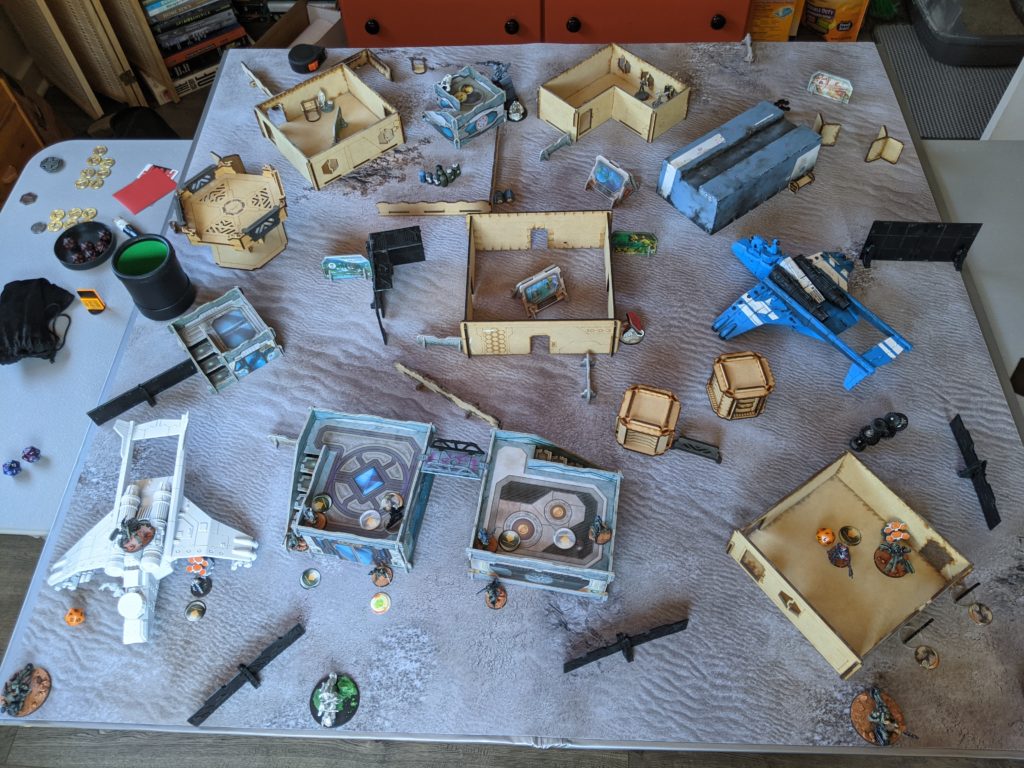
If you’re looking for ideas on how to make terrain, have a look here:
Other Stuff You’ll Need
Game Accessories
Here’s some of the stuff you’ll want to consider buying:
- Measuring Tape – Buy a short one, they’re smaller, lighter, and you’re less likely to drop them. Also, if you drop a small one, it will be less damaging.
- Movement Tool – I like the one from warsen.al, but basically what you’re looking for is a small acrylic ruler. I find it more user friendly for moving models than a tape measure, but choose what you like.
- 5d20 – Dice are very personal, so get what you like. I recommend at least 5d20 so you can make a linked HMG burst roll in one go. I find the dice made by Corvus Belli to be a little biased, but this is based on nothing but anecodotal evidence and confirmation bias, so feel free to ignore me on this point.
- Line Laser – Get a laser that projects a line. You don’t need it, but it’s helpful. I’m a fan of the Harbor Freight one, because it’s cheap, but there are green laser variants that are super visible.
- Dice Tray/Dice Cup – Some people like to roll on the roof of a building, but the folks I play with put a lot of time into their paint jobs. I don’t want to be the one to damage a paint job, so I use a dice cup. It also helps better “randomize” the dice, and serves as a convenient dice and token storage container when I’m not playing. I recommend a dice tray if you don’t want to go the cup route, mostly to corral your dice so you don’t lose them.
Tokens
Okay. Let’s talk tokens. I make my tokens, but there are a number of great token vendors like Muse on Minis and Warsen.al. If you want to make your own though, I recommend using the Infinity Marker Sheet Creator, a 1″ circle hole punch, and a collection of 1″ bottle cap epoxy stickers.
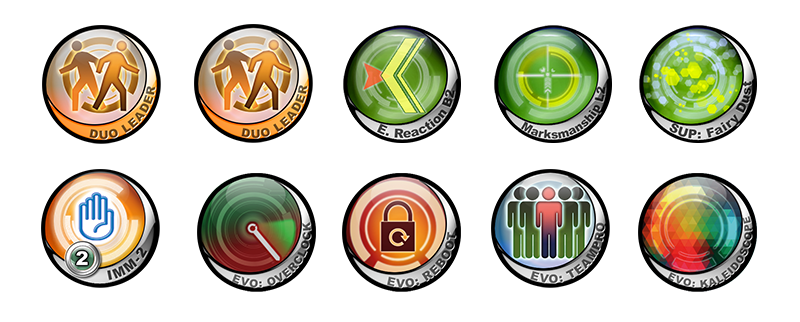
I very much recommend making double-sided tokens by gluing two single-sided tokens together, or at least sticking a sticker to both sides of the token to make them easier to pick up, especially if you cut your nails. Here are some common ideas for double-sided tokens:
- Prone/Unconscious – Aside from order tokens, these are the most common tokens you’ll use.
- Order/Unconscious – This is a useful trick to count remaining orders. As stuff gets knocked out, you remove orders from your pool.
- Command Token/Spearhead – When you spend command tokens for coordinated orders, this is a really easy way to indicate who your spearhead is!
- Camo/Mine – Mines usually start on the table in a camo state, so when they get discovered, just flip it over!
- IMP-1/IMP-2 – If you have impersonators, you’ll want to get a double sided token to reflect both impersonation states.
- Suppression/Targeted – This is more of a visual thing than anything else (the tokens look similar to me), but I do this and have found it a good token space compression choice.
You can of course double up on some rarely used tokens to save space in your token organizer. Going to the local crafts store to buy a bead organizer is a good plan for your tokens, but whatever works for you! There are some non-standard tokens like for Metachemistry and Booty, which you can find here:
Some people swear by having a “Command Panel,” but I find them unnecessary and fiddly. There are a ton of options, but this one from Dovige Scenery (available from Every Little War if you’re in the US) is pretty illustrative of what a command panel is:
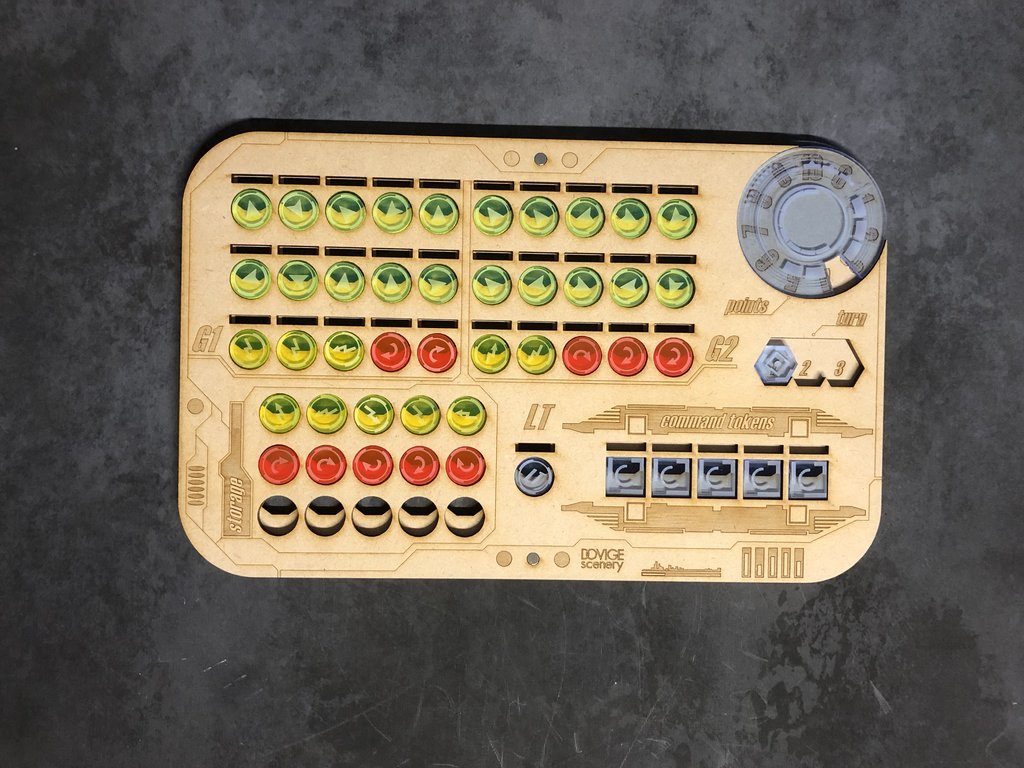
Assembling Models
Well, you need to buy in to the game and then assemble your models. Things you’ll need for this:
- Medium Viscosity Super Glue (Cyanoacrylate) – You need to glue your models together! I’ve been using stuff from BSI for the last few years and have been very happy.
- Cyanoacrylate Accelerant – This goes by several names like Zipkicker, CA Accelerator, etc. This will help you set the super glue much quicker. I very much recommend against the aerosol (pressurized can) type, as it smells awful and will give you a headache if you use it too much. Use the spray mister bottle type (middle of the picture below), then you can use the end of the straw in the bottle (work with the cap unscrewed, you’re not actually going to mist anything) to put a drop of accelerant on the troublesome joint you’re trying to glue. I have been known to hold the spray end of the bottle cap in my teeth so I can hold a model with two hands while I poke the joint with the end of the straw.
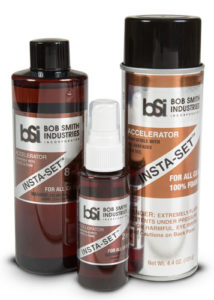
- Hobby Knife – Any hobby knife will do, but ideally you’ll get one with interchangeable blades. Most things marketed for miniature wargamers have a markup, get something cheaper at your local hobby store.
- Hobby Files – Get a set of small files. You’ll want one with a flat and one with a triangular cross section. Same as above, there’s a wargamer markup.
- Jeweler’s Saw – Useful for conversions and such later, or just for cutting of those tacticool rocks.
- Pin Vise and Drill Bits – You’ll want a way to drill holes in your models. This is important because you’ll want to use pins to secure some of the fussy parts of the model.
- Pinning Wire – I’ve been using steel, but when my current spool runs out I’ll be using aluminum or copper wire. Bonsai tree training wire works great, just make sure you get a thin one that matches your bit sizes!
I wrote an article on some different pinning techniques, which you can check out here:
Your First Games
Ordinarily, I’d have recommended that you play Recon+, but with the release of Code One, I’m going to recommend that you play Code One instead. However, if you’re dead set on playing a faction that isn’t in Code One, you can always play Recon+.
COVID-19 Considerations
In the age of COVID-19, it’s been really hard to offer in-person demo or teaching games, so we’ve turned to Tabletop Simulator. It’s NOT a substitute for in-person play with models. Personally, I find the interface clunky and the point of the game for me is to enjoy my opponent’s company in person. Still, not everyone can play in a responsible way in person right now, and there’s a thriving inter-national community of people playing online. Here’s Clint giving us the run down of how to play online using Tabletop Simulator!
Whatever you do, play some smaller games with a limited selection of models. This will help smooth out the learning curve and gently ease you into the game. Code One was specifically designed to do this, and to a lesser extent, so was Recon+.
A few things to remember. Infinity is a game of partnership between you and your opponent. The two of you are working together to:
- have a good time!
- simulate some awesome Sci-Fi combat
In general, Infinity isn’t a game of gotchas. There are a few things in this category, like hidden deployment and airborne deployment, but line of fire is open information! This means you can always ask your opponent what models can see (and shoot) various places on the table. You can also work with your opponent to ensure that you don’t end up moving into a position where they don’t get a free shot on you.
Okay, now the pep talk. You’re going to lose a lot of games when you first start, especially if you’re playing experienced folks. That’s okay. It’s important that you take notes (mental or otherwise) about what you could’ve improved from game to game, as well as the things you did well! That second part is key–always make sure to reward yourself for doing something right, so you’re more likely to remember to do it the next time!
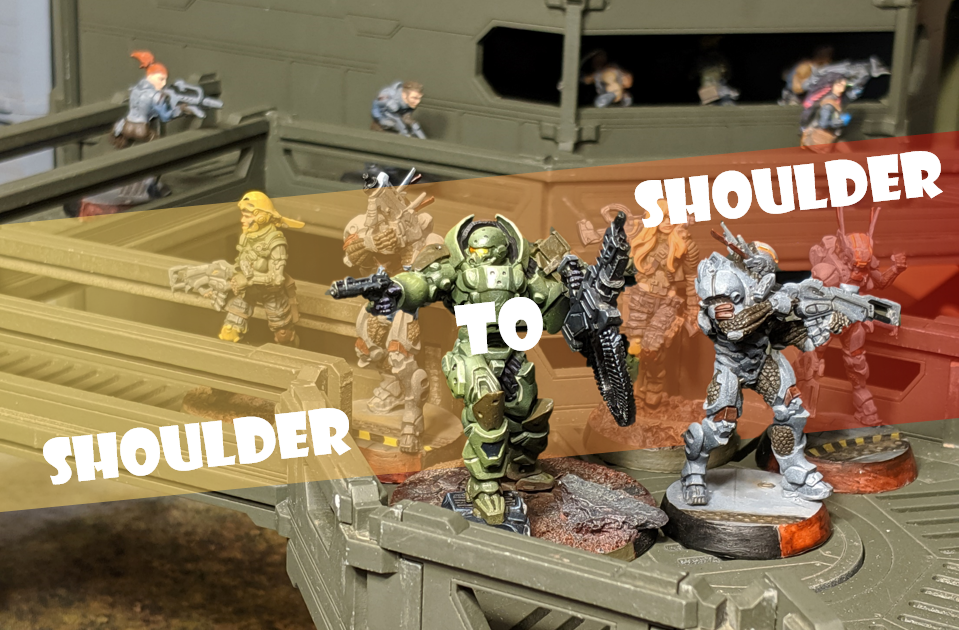
A few key things to remember:
- There are four turns in this game — Deployment, and the three game turns. When you first start playing, you’ll often lose the game in deployment. That said, don’t spend too much time in deployment–ask your opponent for help, and just try stuff out. That’s how you learn!
- Roll First, Look Up Later — There are 30+ factions and hundreds of units in this game, all with different statlines. You’re not going to remember them all. Just roll the dice, and see if it matters. If you roll a 1, you hit! If your opponent rolls a 20, they miss! Unless they’re a linked shotgun or something else silly. Some folks will say: “Oh, you have to to know exactly what your target number is so you can check to see if you crit.” In a tournament, sure. If this is your third game ever, it doesn’t matter. Just roll the dice. If it looks like you missed, you probably missed. The reasoning here is to increase your play speed so you can get more games in and therefore improve more quickly. Precision can come later. You’ll learn the statline of your guys quickly.
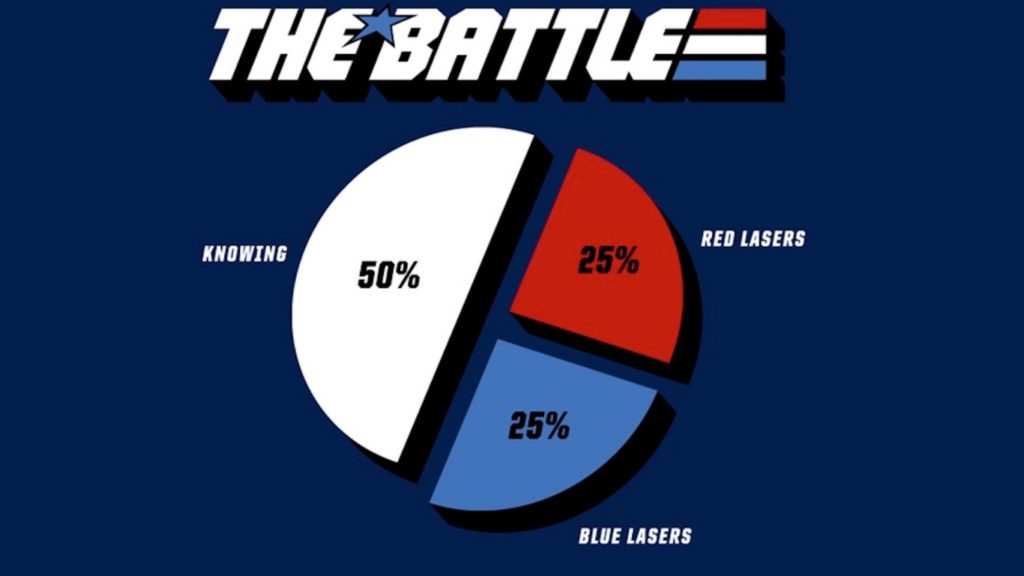
- Chunking — There’s a ton of stuff in this game to remember. Don’t try to remember specific differences, just group things into loose categories. This works for rangebands, i.e. HMGs, Panzerfausts, Bliztens, Flammenspeers, and Akrylat-Kanones all have the same rangebands. It also works for units. Line troopers are basically the same across all factions. A Celestial Guard has a similar statline to a Ghulam has a similar statline to an Algaucil. In most cases you can deal with them in the same way–outrange and shoot them. You’ll develop your own “abbreviations” for the various things in Infinity. Whatever works for you, just remember to try to group things to help yourself out with the mental load.
- Do The Thing! – It is really easy to fall prey to analysis paralysis. Do the first thing that comes to mind. It isn’t going to be the best, but best is the enemy of good enough. Remember, you’re trying to play as many games as possible to get more experience!
Code One
I really like Code One. Basically it’s a stripped down version of the full Infinity game. It’s marketed as its own game, which I think is accurate for many folks, especially newcomers. I highly recommend you play at the 15 points level for your first few games, it’ll help ease you into the game.
Code One tightens up the game of Infinity without oversimplifying. It does that in the following ways:
- Physical Size Reduction – The table you’re playing on is physically smaller than a full game. This helps you keep track of everything and also forces regular interaction with between your models and your opponent’s models, which will help you build good understanding of the rules. Practice makes perfect.
- Rules Reduction – There are less rules in Code One. It’s not a dumbed down game at all, there is a huge amount of tactical depth. What rules are there capture the spirit and essence of the game of Infinity, and all of the rules that can create negative or confusing play experiences are all stripped out. It’s not as rich as the full game, but it’s an excellent palette cleanser for veterans and a great intro for new players.
- Army Simplification – You don’t have access to the full roster of units for a particular army. It helps Corvus Belli and game stores keep things in stock, it removes models with complicated/confusing rules, and it helps balance the game for smaller point values.
My personal take is that I don’t think that I’ll play it outside of a teaching environment, but that’s just me. I think it has a very solid place in the family of games that Corvus Belli has released, and I’m excited to have it replace Recon+ as a teaching tool. You can find more of my thoughts here:
Adam’s got some more thoughts on his blog as well:
Recon+
I really recommend you play Code One if your faction is represented. But, Recon+ is excellent and a reasonable substitute. Here are the rules and some battle reports:

Like Code One, Recon+ games are played on a smaller board, in this case 2′ x 3′, instead of a 4′ x 4′ board and the lists are 150 points instead of the tournament standard 300 (although we’ve run tournaments at many different point levels). There are some additional restrictions on your list building to avoid some degenerate list archetypes (like spamming, etc), but basically you can take the units that make a faction flavorful. All of the Recon+ missions are scaled down versions of ITS missions (the usual tournament scenarios), so you’ll be practicing for tournaments right from the start!
This lets you get a feel for the faction in a smaller-scale engagement, and because the board is smaller you get to interact with your opponent more often. This part is key.
The Infinity Tournament System (ITS)
Currently, we’re on Season 12 of ITS. You can find the rules PDF here:
If you’re interested in a breakdown of all the missions, have a look at this YouTube playlist:
Upping Your Game
This is a very involved subject, so I’ll just break it down using some battle reports that I’ve already written to get you started. You can also have a look at our conversation with Melanie and Erin about what it’s like being a new player:
You’ll also want to spend a little bit of time playing with the Infinity Dice Odds Calculator.
Don’t do this during a game!! I find it rude to just make your opponent wait while you fiddle with your phone. I use it purely for post-game, when you are wondering about a particularly iffy dice exchange you had in the game. If you’ve read my battle reports before on MercRecon.Net, you know I use it all the time when discussing things.

Anyway, welcome to Infinity! It is going to be a multi-year journey where you find your own playstyle and what works for you, so enjoy the process!
Goonhammer Articles
Planning
Applying Pressure
Self Reflection
Hope you found this helpful! Good hunting!
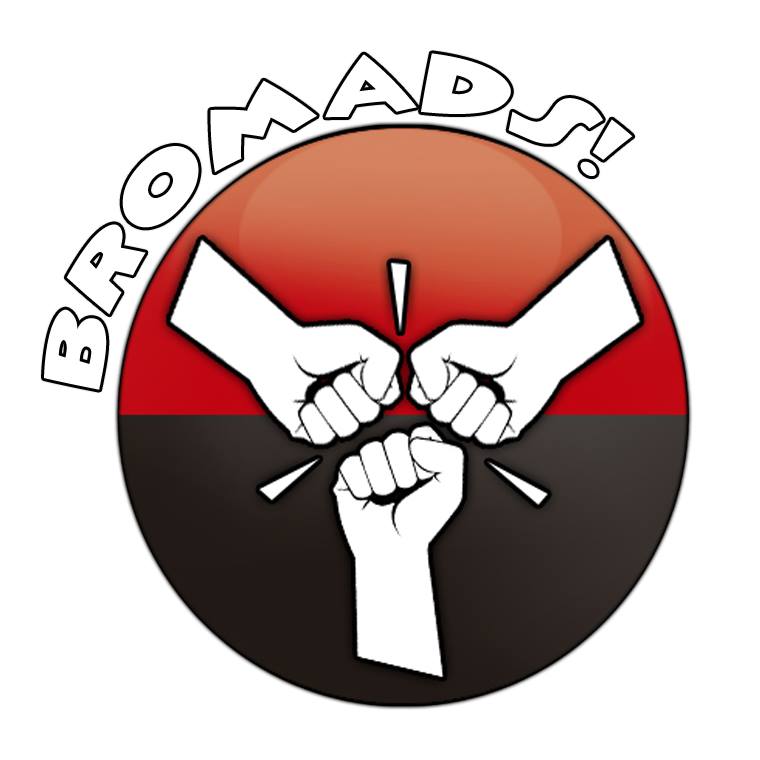

Thank you so much for the time you’ve taken to write this article. I feel more informed about each faction and its sectorials. I’m now putting less pressure on myself to remember everything at once and just roll the dice and have fun.
Thanks for the guide. I want to play with my old friends that just discovered the game and I don’t like to buy things without some research
Great read. I don’t play, too old to start but I look for improvements to my own tabletop game. The read sounds about the way I’d explain my own game. Thanks for the write up.